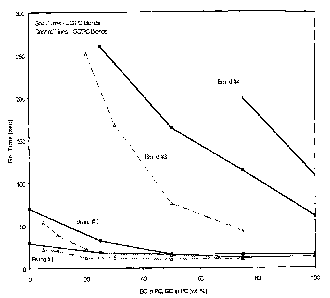Some of the information on this Web page has been provided by external sources. The Government of Canada is not responsible for the accuracy, reliability or currency of the information supplied by external sources. Users wishing to rely upon this information should consult directly with the source of the information. Content provided by external sources is not subject to official languages, privacy and accessibility requirements.
Any discrepancies in the text and image of the Claims and Abstract are due to differing posting times. Text of the Claims and Abstract are posted:
| (12) Patent Application: | (11) CA 2544256 |
|---|---|
| (54) English Title: | ALKYLENE CARBONATES AS WATER GLASS CURE ACCELERANTS |
| (54) French Title: | CARBONATES D'ALKYLENE UTILISES EN TANT QU'ACCELERATEURS DE DURCISSEMENT A BASE DE SILICATE DE SODIUM |
| Status: | Deemed Abandoned and Beyond the Period of Reinstatement - Pending Response to Notice of Disregarded Communication |
| (51) International Patent Classification (IPC): |
|
|---|---|
| (72) Inventors : |
|
| (73) Owners : |
|
| (71) Applicants : |
|
| (74) Agent: | SMART & BIGGAR LP |
| (74) Associate agent: | |
| (45) Issued: | |
| (86) PCT Filing Date: | 2004-11-02 |
| (87) Open to Public Inspection: | 2005-05-12 |
| Availability of licence: | N/A |
| Dedicated to the Public: | N/A |
| (25) Language of filing: | English |
| Patent Cooperation Treaty (PCT): | Yes |
|---|---|
| (86) PCT Filing Number: | PCT/US2004/036438 |
| (87) International Publication Number: | US2004036438 |
| (85) National Entry: | 2006-04-28 |
| (30) Application Priority Data: | ||||||
|---|---|---|---|---|---|---|
|
Provided herein are catalysts useful in the curing of cementitious mixtures,
which catalysts comprise one or more alkylene carbonates in combination with
glycerin carbonate. Through use of a catalyst according to the present
invention, cementitious mixtures containing sodium silicate may be cured at
low temperatures because the catalysts of the invention function well at low
temperatures, even though they contain ethylene carbonate, a material whose
melting point of 36~C otherwise precludes its use as a cure accelerant for
silicates. Figure 1 is a graphical representation of the results shown in
Table II.
L'invention concerne des catalyseurs utiles dans le durcissement de mélanges cimenteux, qui comprennent un ou plusieurs carbonates d'alkylène en combinaison avec du carbonate de glycérine. Le bon fonctionnement desdits catalyseurs à des basses températures permet à des mélanges cimenteux contenant du silicate de sodium de durcir à des basses températures, même si lesdits catalyseurs comprennent du carbonate d'éthylène, un matériau dont le point de fusion de 36 ·C le destine à être utilisé en tant qu'accélérateur de durcissement pour des silicates. La figure 1 est une représentation graphique des résultats indiqués dans le tableau II.
Note: Claims are shown in the official language in which they were submitted.
Note: Descriptions are shown in the official language in which they were submitted.

2024-08-01:As part of the Next Generation Patents (NGP) transition, the Canadian Patents Database (CPD) now contains a more detailed Event History, which replicates the Event Log of our new back-office solution.
Please note that "Inactive:" events refers to events no longer in use in our new back-office solution.
For a clearer understanding of the status of the application/patent presented on this page, the site Disclaimer , as well as the definitions for Patent , Event History , Maintenance Fee and Payment History should be consulted.
| Description | Date |
|---|---|
| Time Limit for Reversal Expired | 2009-11-02 |
| Application Not Reinstated by Deadline | 2009-11-02 |
| Deemed Abandoned - Failure to Respond to Maintenance Fee Notice | 2008-11-03 |
| Inactive: Cover page published | 2006-07-17 |
| Letter Sent | 2006-07-06 |
| Inactive: Notice - National entry - No RFE | 2006-07-06 |
| Application Received - PCT | 2006-05-29 |
| National Entry Requirements Determined Compliant | 2006-04-28 |
| Application Published (Open to Public Inspection) | 2005-05-12 |
| Abandonment Date | Reason | Reinstatement Date |
|---|---|---|
| 2008-11-03 |
The last payment was received on 2007-09-20
Note : If the full payment has not been received on or before the date indicated, a further fee may be required which may be one of the following
Patent fees are adjusted on the 1st of January every year. The amounts above are the current amounts if received by December 31 of the current year.
Please refer to the CIPO
Patent Fees
web page to see all current fee amounts.
| Fee Type | Anniversary Year | Due Date | Paid Date |
|---|---|---|---|
| Basic national fee - standard | 2006-04-28 | ||
| Registration of a document | 2006-04-28 | ||
| MF (application, 2nd anniv.) - standard | 02 | 2006-11-02 | 2006-09-18 |
| MF (application, 3rd anniv.) - standard | 03 | 2007-11-02 | 2007-09-20 |
Note: Records showing the ownership history in alphabetical order.
| Current Owners on Record |
|---|
| HUNTSMAN PETROCHEMICAL CORPORATION |
| Past Owners on Record |
|---|
| HOWARD P. KLEIN |
| JOHN H. CLEMENTS |
| KATTY DARRAGAS |